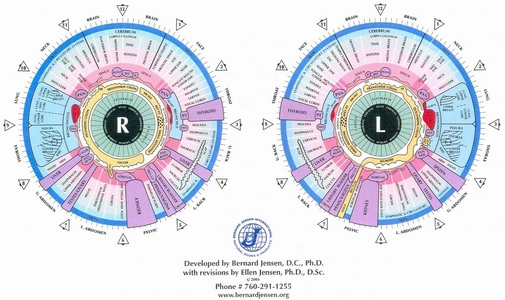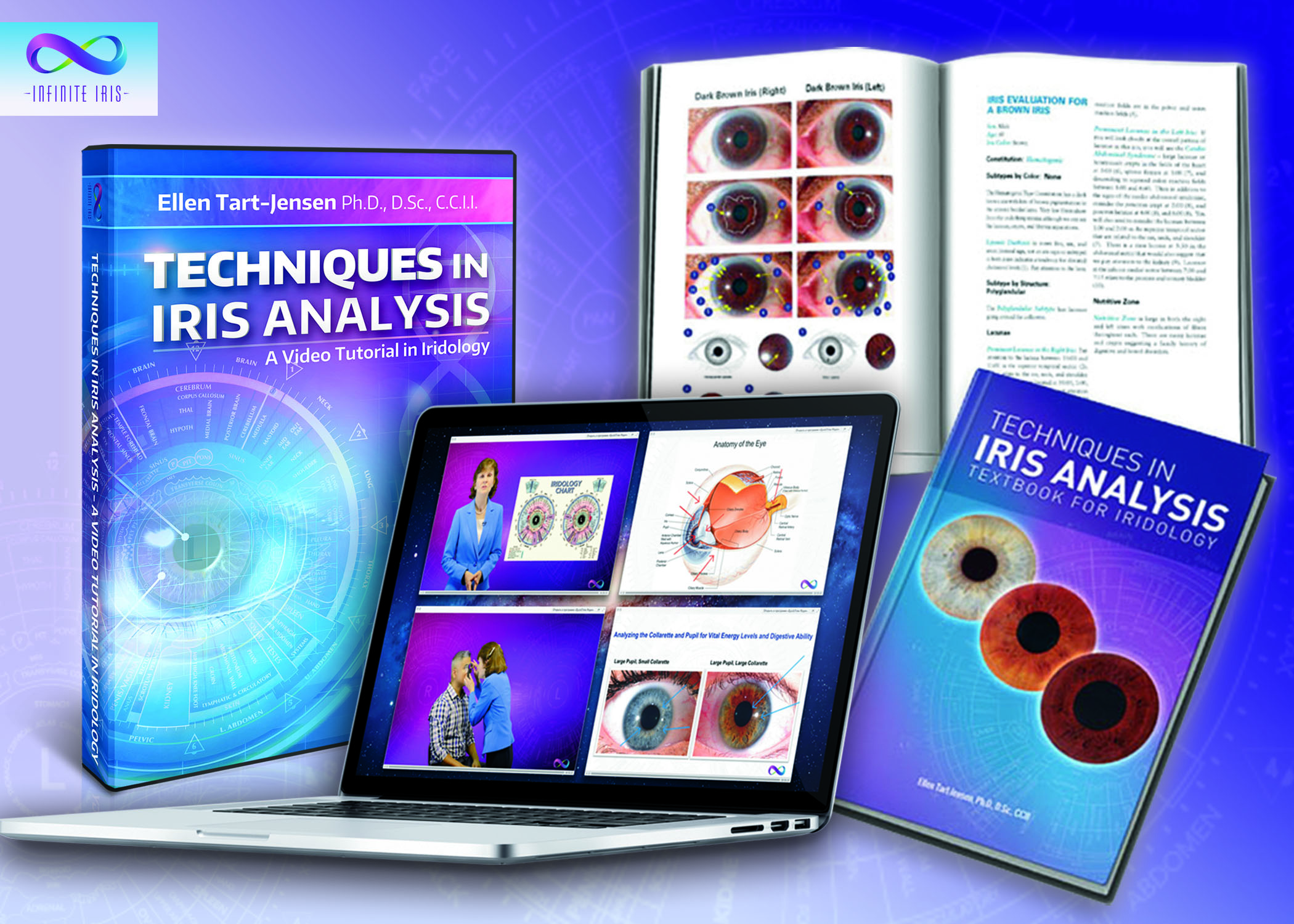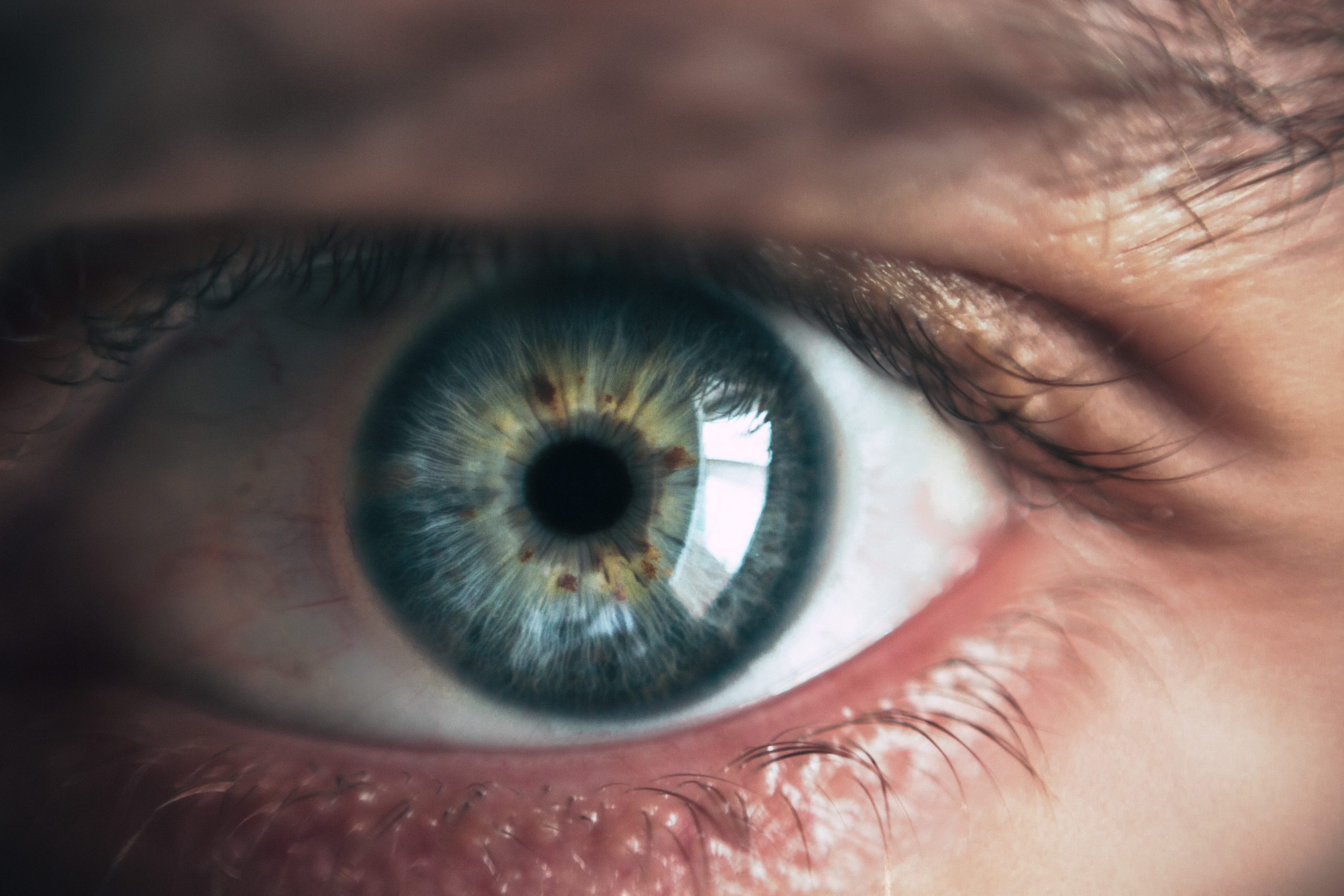Address
6050 N 9th Ave Suite D Pensacola FL 32504
Work Hours
Mon: 10am – 6pm
Tues: 10am – 6pm
Wed : 9am – 4pm
Thurs: 9am – 12pm
Fri - Sat- Sun: Closed
Address
6050 N 9th Ave Suite D Pensacola FL 32504
Work Hours
Mon: 10am – 6pm
Tues: 10am – 6pm
Wed : 9am – 4pm
Thurs: 9am – 12pm
Fri - Sat- Sun: Closed

In “Tools And Techniques In Modern Iridology,” you will discover the fascinating world of iridology and the innovative tools and techniques used in this practice. Owned and operated by Holly Gibson, a Certified Iridologist and Natural Health Advisor, Emerald Coast Holistic Health is dedicated to helping you achieve optimal well-being. With nine years of experience in the alternative health field, Holly will guide you through a comprehensive Health and Wellness consultation, addressing your concerns, providing guidance, and creating a personalized plan for your overall body well-being. Join Holly on this journey towards improved health and discover the wonders of modern iridology.
Iridology is a holistic health assessment technique that involves the examination of the iris, the colored part of the eye, to gain insight into an individual’s overall health. It is based on the belief that the iris is a microcosm of the body, reflecting its conditions and potential weaknesses. By studying the iris’s markings, color variations, and other characteristics, an iridologist can assess an individual’s constitutional strengths and weaknesses, identify potential health risks, and monitor their health progress over time.
Iridology is the practice of analyzing the iris of the eye to determine a person’s health. The iris is believed to contain markings and patterns that correspond to various bodily systems and organs. By examining these patterns, an iridologist can gain insights into a person’s overall health and well-being.
This image is property of lh3.googleusercontent.com.
The practice of iridology dates back thousands of years and can be traced back to ancient civilizations such as the Egyptians, Greeks, and Chinese. However, it was not until the late 19th century that modern iridology began to take shape. Hungarian physician Ignaz von Peczely is often credited as the founder of modern iridology, as he developed the concept of iris analysis and published his findings in the 1881 book “Discoveries in the Realms of Nature and Art of Healing”.
Iridology is based on several key principles. The first principle is that the iris is a reflection of the body, both in terms of its overall health and its potential weaknesses. Each part of the body is believed to correspond to a specific zone or area within the iris, and examining these zones can provide insights into a person’s health. The second principle is that the iris can be seen as a dynamic system, with changes in its markings and color indicating changes in the body. Finally, iridologists believe that the iris can provide insights into an individual’s constitutional strengths and weaknesses, which can influence their overall health and well-being.

This image is property of sturnus.eu.
The iris, the colored part of the eye, plays a significant role in iridology. It is not only responsible for giving our eyes their unique color but also contains important information about our health.
The iris is composed of muscular fibers that contract and expand to control the size of the pupil, thereby regulating the amount of light that enters the eye. It is made up of various layers, including the epithelium, stroma, and pigmented layer. The intricate structure of the iris not only contributes to its unique appearance but also serves as a canvas for iridologists to analyze.
Iridologists believe that the iris is a microcosm of the body, meaning it contains information about the entire body within its structure. Just as a map can provide information about a specific region, the markings, patterns, and colors of the iris can provide insights into the organs, tissues, and systems of the body. By understanding the relationship between different areas of the iris and corresponding parts of the body, an iridologist can identify potential health issues and imbalances.
The iris is not a blank canvas but is adorned with numerous markings, colors, and patterns. These markings are believed to be reflections of the body’s health and can provide vital information to the trained eye of an iridologist. Some of the primary markings analyzed in iridology include crypts, lacunae, radial furrows, and pigmentation variations. Each of these markings is thought to correspond to different aspects of the body, such as the lymphatic system, digestive system, and overall vitality.
In the early days of iridology, practitioners relied on a few essential tools to conduct their assessments. These tools have stood the test of time and are still used in traditional iridology practices today.
A magnifying glass is a vital tool in iridology as it allows practitioners to examine the intricate details of the iris with precision. The magnification power of the lens allows for a closer inspection of the iris’s markings and colors, enabling the iridologist to make accurate judgments about an individual’s health.
Iridology charts are visual representations of the iris, depicting the various zones and areas that correspond to different parts of the body. These charts serve as a reference guide for iridologists during their examinations, allowing them to quickly locate and assess the different areas of the iris.
In more modern iridology practices, cameras with microscope attachments have become a valuable tool. This allows for detailed and accurate imaging of the iris, which can then be analyzed using advanced iridology software. These images provide a visual record of the iris’s condition and can be used for future reference and comparison.

This image is property of myinfiniteiris.com.
As technology has advanced, so has the equipment used in iridology. Advanced iridology equipment offers more precise and detailed analysis, aiding in the interpretation of the iris.
A digital irscope is a specialized camera designed specifically for capturing high-resolution images of the iris. These images can then be displayed on a computer screen, allowing for detailed analysis and examination. Digital iriscopes often come with built-in software that assists iridologists in identifying and interpreting various iris characteristics.
Iris analysis software complements the use of digital iriscopes by providing advanced tools for analyzing iris images. This software can identify specific iris markings, patterns, and colors, and offer interpretations based on established iridology principles. The software can also compare images over time, providing insights into an individual’s health progress.
High-resolution cameras have become an essential tool in modern iridology practices. These cameras capture detailed images of the iris, allowing for accurate and thorough analysis. The high resolution of these cameras ensures that every marking, color variation, and pattern is captured with precision, enabling the iridologist to make informed judgments about an individual’s health.
Iridology employs various techniques to analyze, interpret, and understand the iris. These techniques help iridologists gain valuable insights into an individual’s health and well-being.
Constitutional analysis is a technique used in iridology to determine an individual’s overall constitutional strengths and weaknesses. By examining the iris markings and colors, an iridologist can identify the individual’s underlying tendencies and potential health risks. This information allows for tailored recommendations and interventions to support and optimize the individual’s health.
Acute analysis is focused on identifying acute or recent health conditions that may be affecting the individual. By examining specific areas or zones of the iris, an iridologist can detect signs of inflammation, toxicity, or trauma. This information can aid in the diagnosis and treatment of acute health issues.
Systematic analysis involves examining the entire iris systematically, considering each zone and area carefully. This technique allows for a comprehensive assessment of the individual’s health status, helping to identify potential imbalances or weaknesses in different bodily systems. Systematic analysis aids in developing a holistic understanding of the individual’s overall health and well-being.

This image is property of achs.edu.
The process of iridology examination involves several steps and techniques to gather information and assess an individual’s health.
Before the iridology examination begins, the client is usually asked to provide detailed information about their medical history, lifestyle, and current health concerns. This information helps the iridologist to focus on specific areas of the iris and tailor the examination to the individual’s unique needs.
Iris photography is an essential part of the iridology examination process. Specialized cameras or iriscopes are used to capture high-resolution images of the iris. These images serve as a visual record and reference for analysis during the examination. The iridologist will take multiple photographs from different angles to ensure a comprehensive view of the iris.
Once the iris photographs have been taken, the iridologist begins the process of iris analysis. By carefully examining the markings, colors, patterns, and other characteristics of the iris, the iridologist can gather information about the individual’s health. This analysis is done in consultation with the client, allowing for a collaborative discussion about the findings and their potential implications.
The markings found in the iris contain valuable information about an individual’s health. Understanding and interpreting these markings is a crucial aspect of iridology.
Color variations in the iris can indicate imbalances or underlying health issues. For example, a dark brownish discoloration in a specific area may suggest a weakness or congestion in the corresponding organ or system. Conversely, a vibrant and clear color in another area may indicate a well-functioning organ or vitality in that part of the body. Understanding these color variations helps in identifying potential health risks and imbalances.
Pigmentations and lesions in the iris can provide insights into the individual’s health history and current conditions. Dark spots, specks, or lines may indicate accumulated toxins or past illnesses. These markings can aid iridologists in understanding an individual’s health journey and guide them in recommending appropriate interventions.
Contraction furrows, also known as stress rings or contraction rings, are circular markings that appear in the iris. These furrows can indicate periods of physical or emotional stress experienced by the individual. Understanding these furrows helps iridologists identify stressors and develop strategies to support the individual’s overall well-being.

This image is property of redgrapewisdom.com.
Iridology is often used as a complementary tool in holistic health assessments. It can provide valuable insights that complement traditional diagnostic methods and aid in the overall understanding of an individual’s health.
Iridology offers a unique perspective on an individual’s health that complements traditional diagnostic methods. While medical tests focus on specific symptoms or conditions, iridology provides a holistic view of the individual’s overall health, considering factors such as constitutional strengths and weaknesses, potential imbalances, and overall vitality. By combining the information obtained from iridology with traditional diagnostic methods, healthcare professionals can develop a more comprehensive understanding of the individual’s health.
One of the primary benefits of iridology is its ability to identify potential health risks before the onset of symptoms or diseases. By examining the iris, an iridologist can detect signs of imbalance or weakness in specific areas of the body, allowing for timely intervention and preventive measures. This can be especially valuable for individuals who have a family history of certain health conditions or who are interested in proactive healthcare.
Iridology also has the potential to monitor an individual’s health progress over time. By comparing iris images taken at different intervals, an iridologist can track changes in the iris’s markings, color variations, and other characteristics. This monitoring helps in gauging the effectiveness of interventions, assessing the impact of lifestyle changes, and providing support for ongoing health maintenance.
Iridology can be seamlessly integrated with other modalities to support overall health and well-being.
Iridology can complement nutritional counseling by providing insights into an individual’s digestive system and nutrient absorption. By identifying areas of weakness or congestion in the iris, iridologists can suggest dietary modifications and nutritional supplements to support the body’s needs. This integration of iridology with nutritional counseling ensures a holistic approach to optimizing an individual’s nutritional status.
Herbal medicine and iridology can work together to support an individual’s health goals. Iridology can guide herbalists in selecting appropriate herbs by identifying areas of weakness or imbalance in the body. Additionally, iridology can help in tracking the effectiveness of herbal treatments by monitoring changes in the iris over time. This integration allows for a personalized and targeted approach to herbal medicine.
Iridology can be integrated with energy healing modalities such as Reiki or acupuncture to enhance the effectiveness of these therapies. By identifying energy imbalances or areas of weakness in the iris, iridologists and energy healers can collaboratively design treatment plans that support the body’s natural healing mechanisms. This integration promotes a holistic approach to energy healing.
Modern iridology offers a comprehensive and holistic approach to health assessment and maintenance. By analyzing the iris’s markings, colors, and other characteristics, iridologists can gain valuable insights into an individual’s health and well-being. The growing popularity of iridology is a testament to its effectiveness and potential for contributing to overall health. With advancements in technology and the continued integration of iridology with other modalities, the future of iridology looks promising. As more people recognize the benefits of this ancient practice in their holistic health journeys, the field of iridology will continue to evolve and develop, offering even greater support for overall well-being.